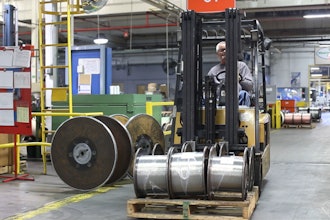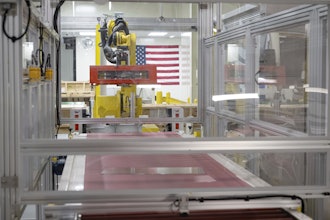During a workshop I was conducting during the last recession, a manufacturing company owner stood up to vent his emotions on how badly the supplier manufacturers were being treated in supply chains.
He was mad and he decided to let everyone in the workshop know his feelings. He proceeded to list all of the unfair changes that had happened in the ‘90s:
- He despised globalization, as if it were a new form of communism spreading around the world.
- He described the large companies who were outsourcing to China and closing U.S. plants as un-American.
- He berated the government for not stepping in to protect U.S. manufacturers from floating currencies and unfair trade.
- He bemoaned the fact that his larger customers had not allowed any price increases and, in fact, were asking for contractual discounts for future work.
He was frightened by a road to the future that seemed to be littered with unknown land mines. Out of frustration, he finally said that all he wanted was for the economy and manufacturing to return to the way they were in the early 90s.
He directed his impassioned speech at me and seemed to be looking for some kind of absolutist answer. I told him that I could not offer predictions about the future economy but I could answer one thing with great certainty -- we would never return to the ‘good old days’ of manufacturing.
I have reflected on this encounter many times since, and I’ve decided that worrying about how unfair things have become won’t help small and midsize manufacturers (SMMs) survive in the future. In fact, I believe we have to quit worrying about high-volume parts going to low-cost countries and focus all of our energies on adapting to the demands of the new economy in ways that work.
There is ample reason to worry about the future of America’s small and midsize manufacturing companies. Despite all of the process efficiencies, since 1980 U.S. manufacturing has declined:
- From 19.4 to 14.2 million employees
- From 366,000 to 340,000 companies
- From 22 percent to 12 percent of GDP
According to the U.S. Department of Commerce, manufacturers with fewer than 500 employees make up over 98 percent of the 344,188 manufacturers and provide more than 65 percent of all manufacturing employment. These SMMs are the companies who have been hurt the most in the decline.
But there is good news too -- by using lean and other process improvements, SMMS have reduced their costs significantly, and productivity in manufacturing is twice as high as any other sector of the economy. American manufacturing is holding its own but is not growing.
Can SMMs Survive?
Yes. Not all SMMs are going to be able to change, but many will survive and compete -- just not as they have competed in the past. There are many examples of SMMs who are not only surviving but are flourishing in this era of change.
These companies always stand out because they don’t just rely on cost reduction or improved operations to compete. They have adapted to the new world order by being innovative, good at monitoring customers, quick to adapt to the market changes, and more profitable than their competition.
Change isn’t a threat, it’s nourishment. These companies are building a portfolio of market niches and a diverse customer base to insulate them from changing demands of customers.
The new stars emerging in this economy are small and midsize manufacturers (SMMs) who are not afraid of foreign competitors and have new types of organizations that can “turn on a dime” when required. They prefer high margins and low volume and operate with excellent cost information, which allows them to continuously prospect for new opportunities.
The strategies used by the new stars of manufacturing are many and varied:
Finding New Customers
Nimet Industries is a job shop in South Bend, Ind., that is doing very well. Part of their sales strategy is a conscious effort to not sell a large percentage of their capacity to any one customer. They say, “If it looks like a job will take too much of our capacity, we won’t quote it as competitively as some companies might. Anything above 20 percent of total sales we really scrutinize to try and make sure it makes sense for us.” This is a very progressive strategy because most job shops depend on 2 or 3 customers for the majority of their business and rise and fall with these customers
Nimet Industries is a job shop in South Bend, Ind., that is doing very well. Part of their sales strategy is a conscious effort to not sell a large percentage of their capacity to any one customer. They say, “If it looks like a job will take too much of our capacity, we won’t quote it as competitively as some companies might. Anything above 20 percent of total sales we really scrutinize to try and make sure it makes sense for us.” This is a very progressive strategy because most job shops depend on 2 or 3 customers for the majority of their business and rise and fall with these customers
Focus on Market Diversity
Haas Automation started out with four primary machine tool products. They have expanded the line into 80 different models to appeal to hundreds of applications and markets in a wide range of industries. Haas is now the number one manufacturer of machine tools in the world in terms of unit volume
Haas Automation started out with four primary machine tool products. They have expanded the line into 80 different models to appeal to hundreds of applications and markets in a wide range of industries. Haas is now the number one manufacturer of machine tools in the world in terms of unit volume
Provide Specialized Services
After the EDM machine market collapsed, Charmilles Technologies of Lincolnshire, Ill., knew it had to come up with creative ways to generate sales. They doubled the size of their field service force to be able to call on every known customer. They increased sales volume $3 million in the first year.
After the EDM machine market collapsed, Charmilles Technologies of Lincolnshire, Ill., knew it had to come up with creative ways to generate sales. They doubled the size of their field service force to be able to call on every known customer. They increased sales volume $3 million in the first year.
Use a System to Develop New Products
By using good market research techniques, studying competitors, and focusing on customer needs, Michael LaRocco of Pittsburgh, Pa., has developed new products with tremendous competitive advantage. U.S. Liners is the fastest growing manufacturer in Pittsburgh and he has created four successful new products in three years.
By using good market research techniques, studying competitors, and focusing on customer needs, Michael LaRocco of Pittsburgh, Pa., has developed new products with tremendous competitive advantage. U.S. Liners is the fastest growing manufacturer in Pittsburgh and he has created four successful new products in three years.
Vertical Integration
After the last recession, DTI of Hillsboro, Ore., decided they could not compete on cost alone. They decided to compete on value and quick deliveries. They invested in many new machine tools and brought in outside processes like nickel plating, laser cutting, heat-treating to vertically integrate their plant. The strategy has worked and they have doubled in size since 2002.
After the last recession, DTI of Hillsboro, Ore., decided they could not compete on cost alone. They decided to compete on value and quick deliveries. They invested in many new machine tools and brought in outside processes like nickel plating, laser cutting, heat-treating to vertically integrate their plant. The strategy has worked and they have doubled in size since 2002.
Costing and Pricing Strategy
John McFarland of Baldor Electric Motors suggests you study your customers and provide the best value. “Don’t try to compete on price because it is not a sustainable advantage. If you live by price you will die by price. This strategy has worked very well and they manufacture all of their products in the U.S. and sell to 70 countries
John McFarland of Baldor Electric Motors suggests you study your customers and provide the best value. “Don’t try to compete on price because it is not a sustainable advantage. If you live by price you will die by price. This strategy has worked very well and they manufacture all of their products in the U.S. and sell to 70 countries
Workforce Education and Training
If we don’t solve the workforce education and training problem for the new manufacturing workers, we will certainly lose American manufacturing. Instead of blaming the education system or the workers, Siemens Energy and Automation has taken the bull by the horns and provides all the education needed in their plants. They address education deficiencies with remedial classes in math, science and English. They provide all types of skill training, and they are the rare company that still offers apprentice training.
If we don’t solve the workforce education and training problem for the new manufacturing workers, we will certainly lose American manufacturing. Instead of blaming the education system or the workers, Siemens Energy and Automation has taken the bull by the horns and provides all the education needed in their plants. They address education deficiencies with remedial classes in math, science and English. They provide all types of skill training, and they are the rare company that still offers apprentice training.
Customization and Short Product Runs
Sexton Can Company of Martinsburg, W.Va., has been very successful in developing specialized products for niche markets where they could gain a competitive advantage and maintain profitability. Sexton Can’s primary competitive advantage is that they can manufacture a huge range of sizes, in small lots, and meet accelerated delivery requirements. They can’t compete with the low cost countries for the cheap high volume orders, but have been ingenious in designing their own proprietary hydraulic presses and processes and can produce very high quality steel containers at very competitive prices.
Sexton Can Company of Martinsburg, W.Va., has been very successful in developing specialized products for niche markets where they could gain a competitive advantage and maintain profitability. Sexton Can’s primary competitive advantage is that they can manufacture a huge range of sizes, in small lots, and meet accelerated delivery requirements. They can’t compete with the low cost countries for the cheap high volume orders, but have been ingenious in designing their own proprietary hydraulic presses and processes and can produce very high quality steel containers at very competitive prices.
Changing the Organization to Find Opportunities
Ricardo Semler of Semco Inc. wanted to push authority down to the workers and make his organization quick and flexible. He realized there was no way to achieve empowerment in a centralized, functional organization. He wanted fewer levels of management and faster response in decision making. He carefully evaluated any department or function that did not bring value to the customer. He felt the overhead departments were too bureaucratic, too expensive and diverted attention from the company’s real objectives
Ricardo Semler of Semco Inc. wanted to push authority down to the workers and make his organization quick and flexible. He realized there was no way to achieve empowerment in a centralized, functional organization. He wanted fewer levels of management and faster response in decision making. He carefully evaluated any department or function that did not bring value to the customer. He felt the overhead departments were too bureaucratic, too expensive and diverted attention from the company’s real objectives
So he scrapped the pyramid shape of his organization and broke the company down to smaller units. Semler says “even the most cynical observers were astonished to find that things were better off once we got rid of the pyramid and all its rungs and roles.”
Conclusion
American manufacturers have always been unique in the world. Entrepreneurs who are not afraid of risks and who have always been very innovative generally own American manufacturing companies. American manufacturing has proven very resilient and has always bounced back from world wars, depressions, recessions, and the threats of foreign competitors.
We have the great advantage of being in the market and being in close proximity to the customers. We simply have to find ways to create competitive advantage.
Michael P. Collins is president of MPC Management, a manufacturing consulting company, and the author of the book, “Saving American Manufacturing.” For more information, visit http://www.mpcmgt.com or email [email protected].


















